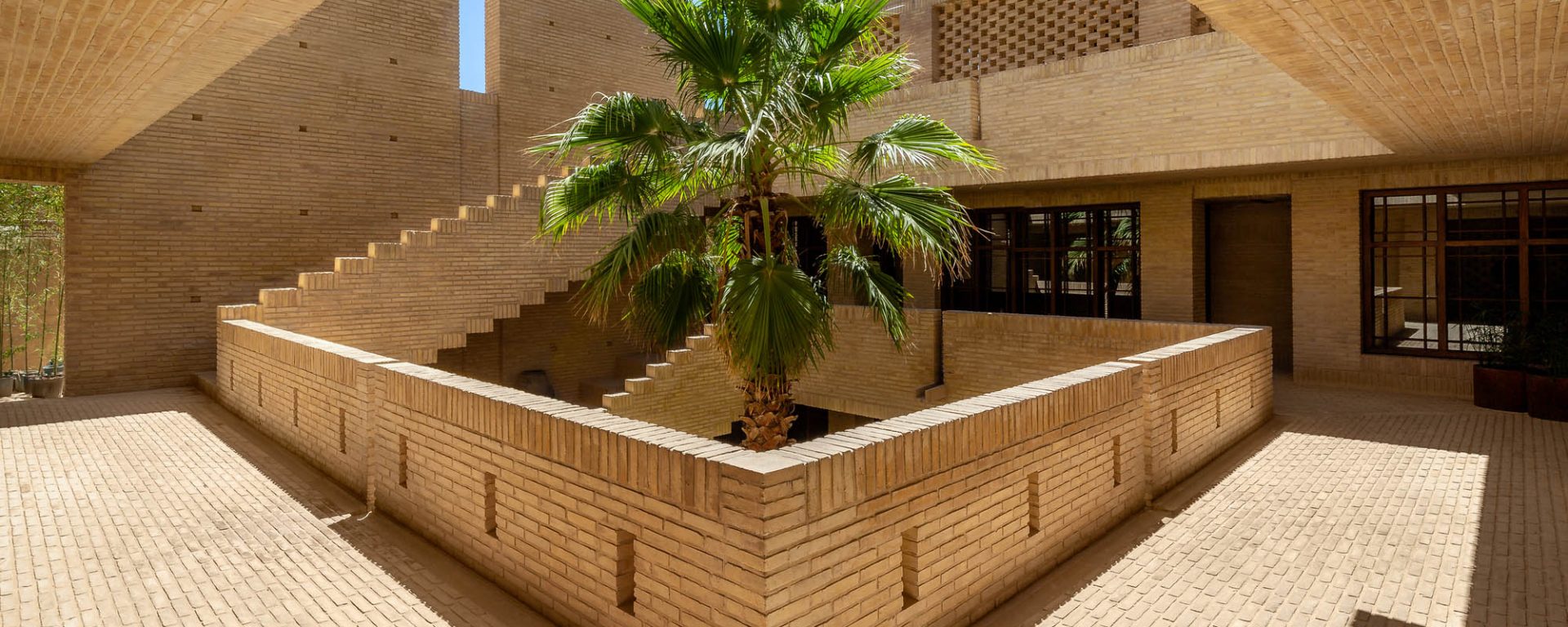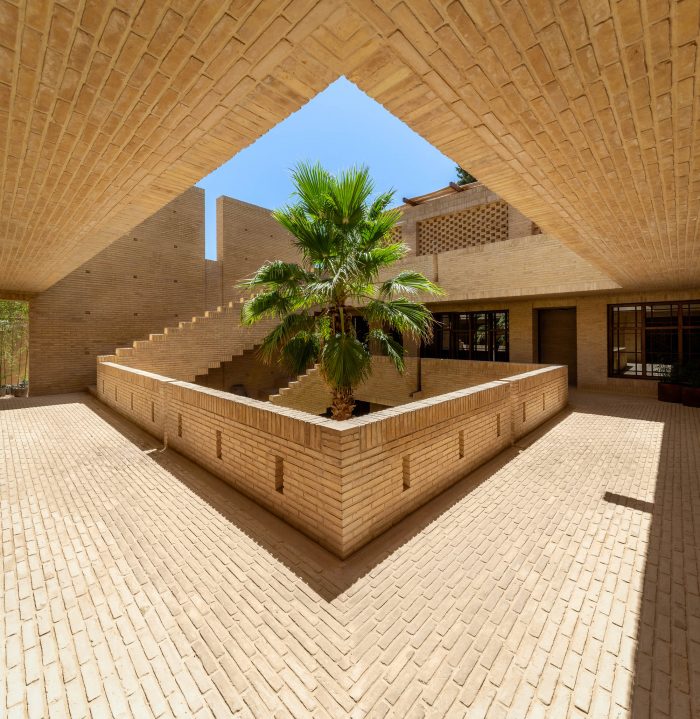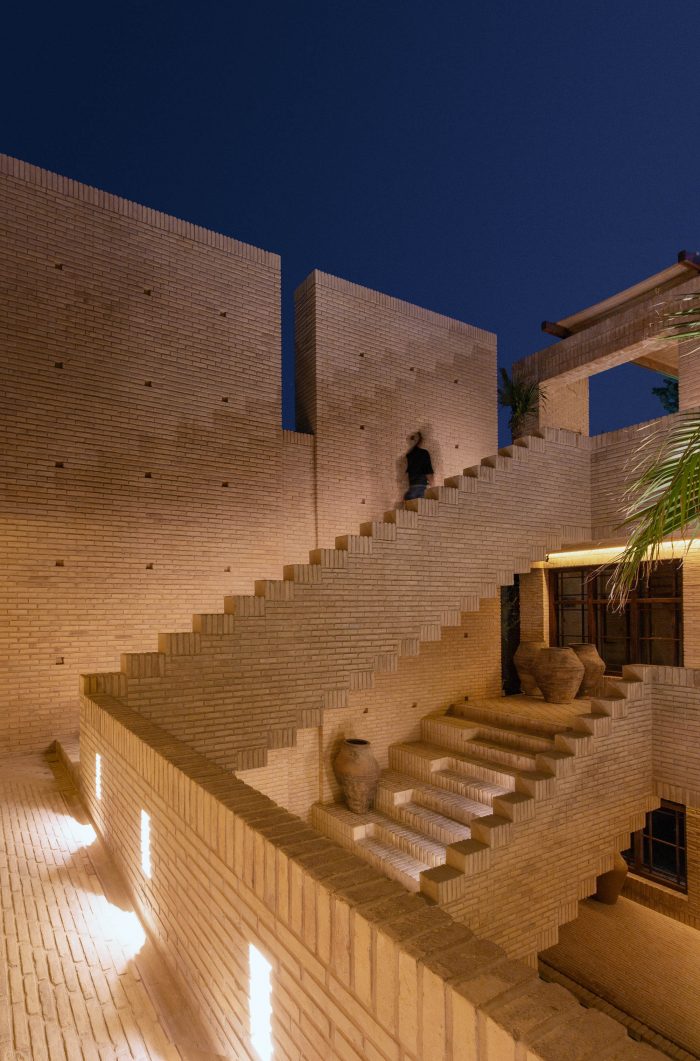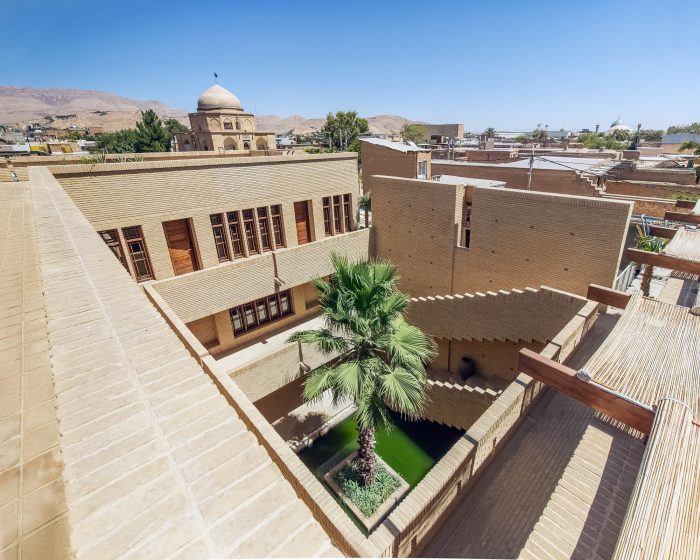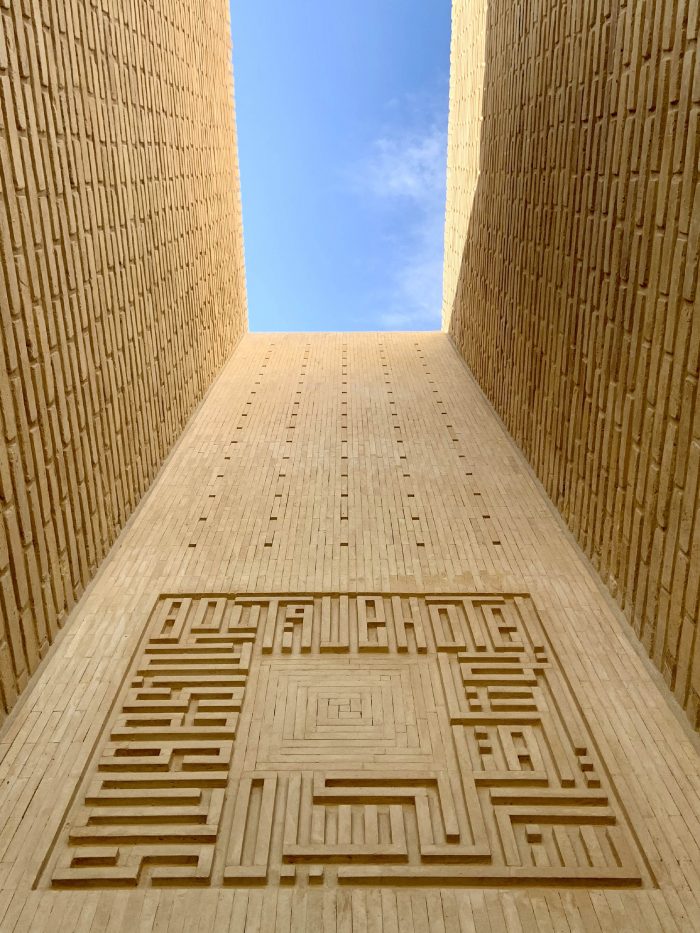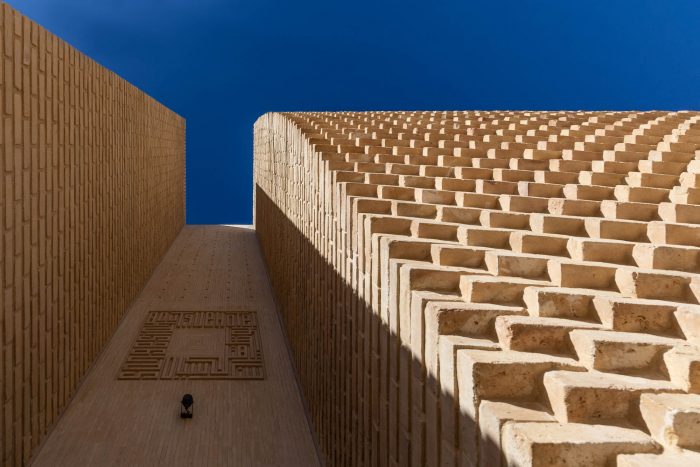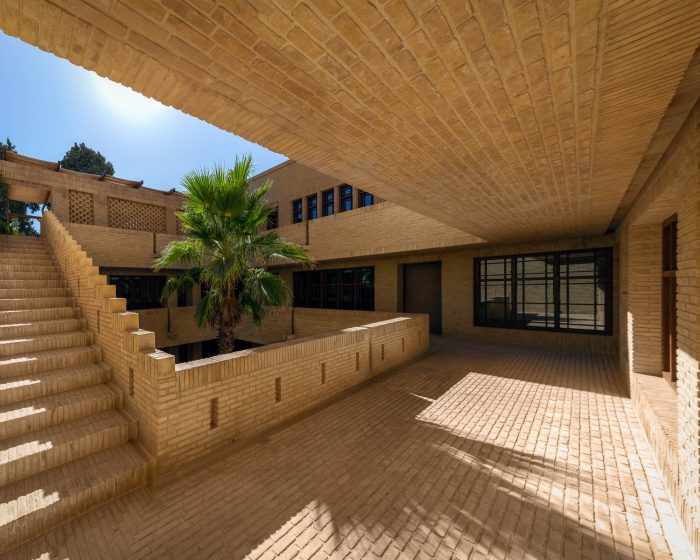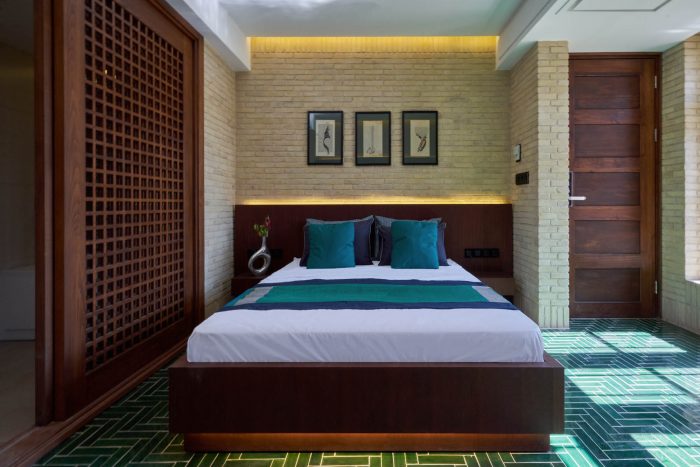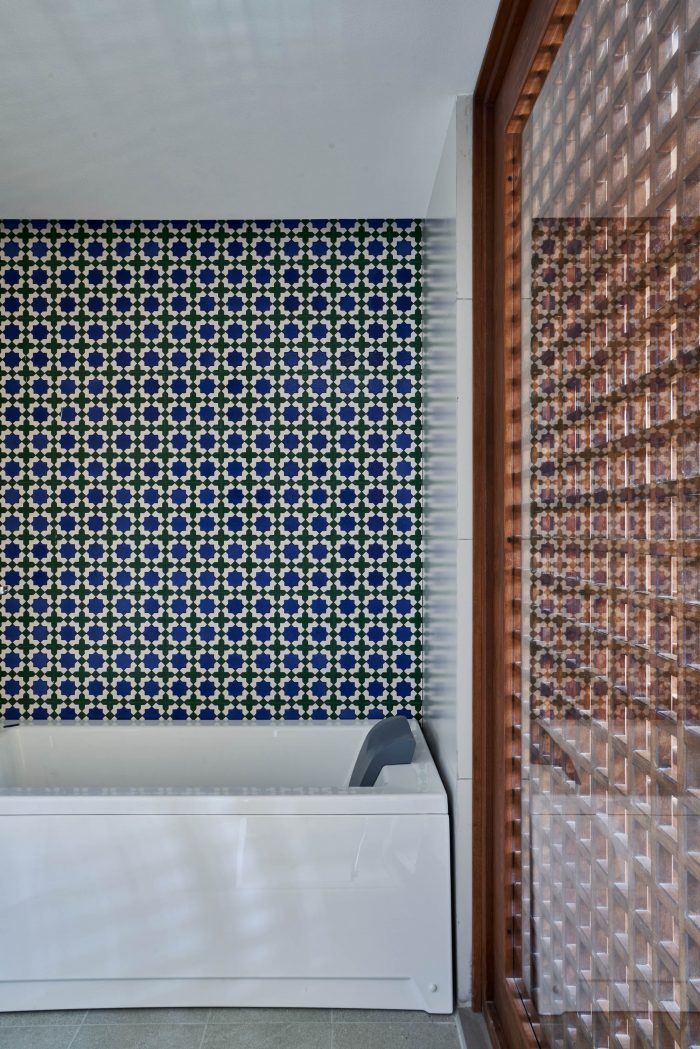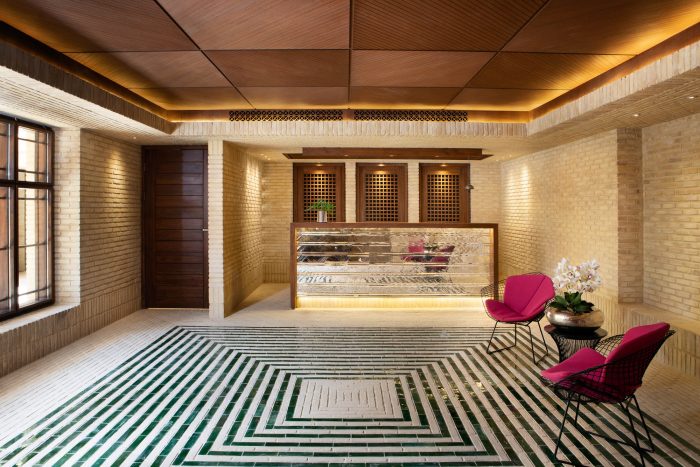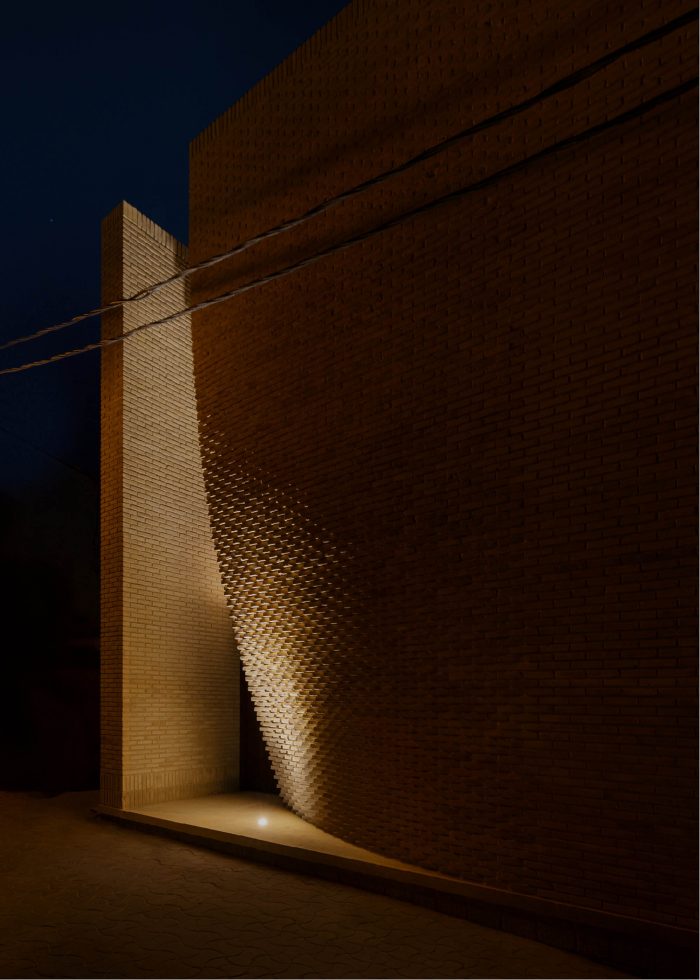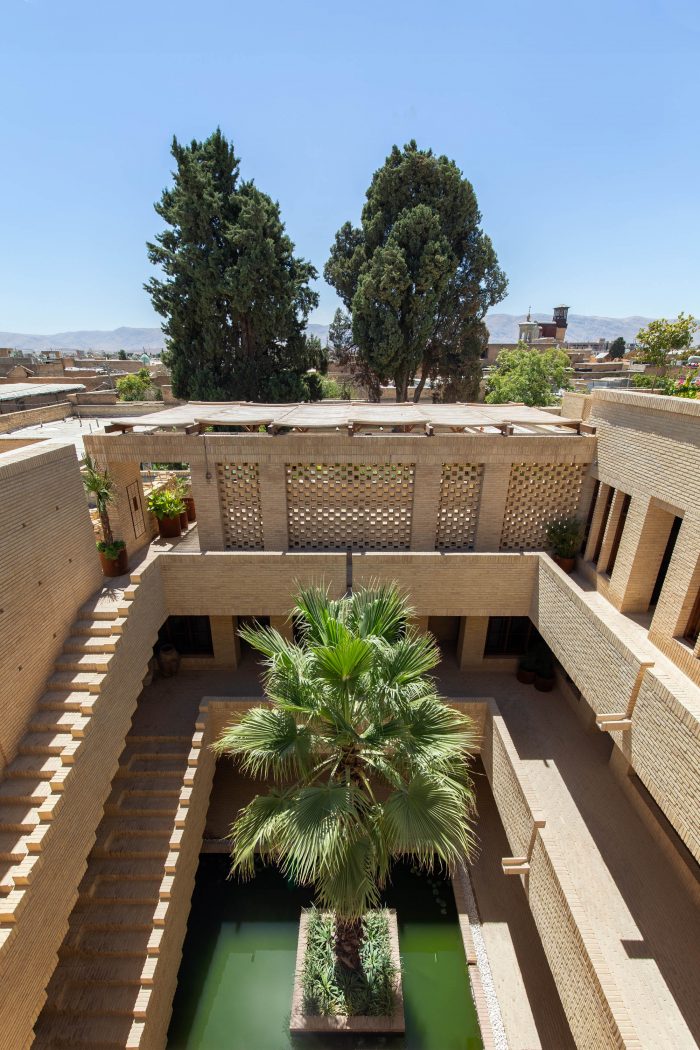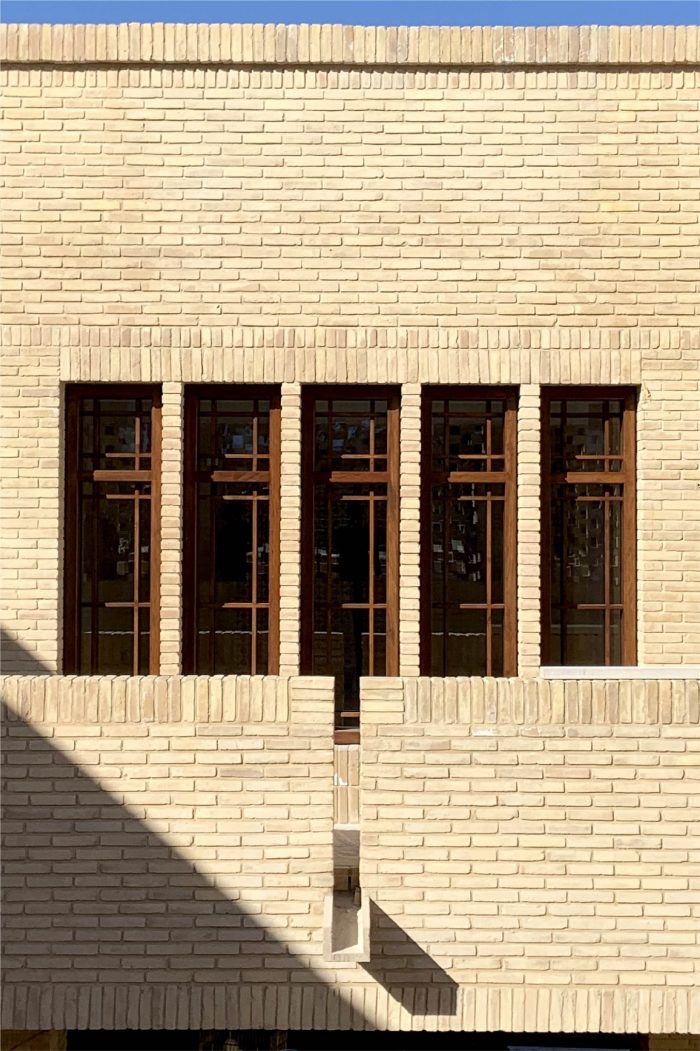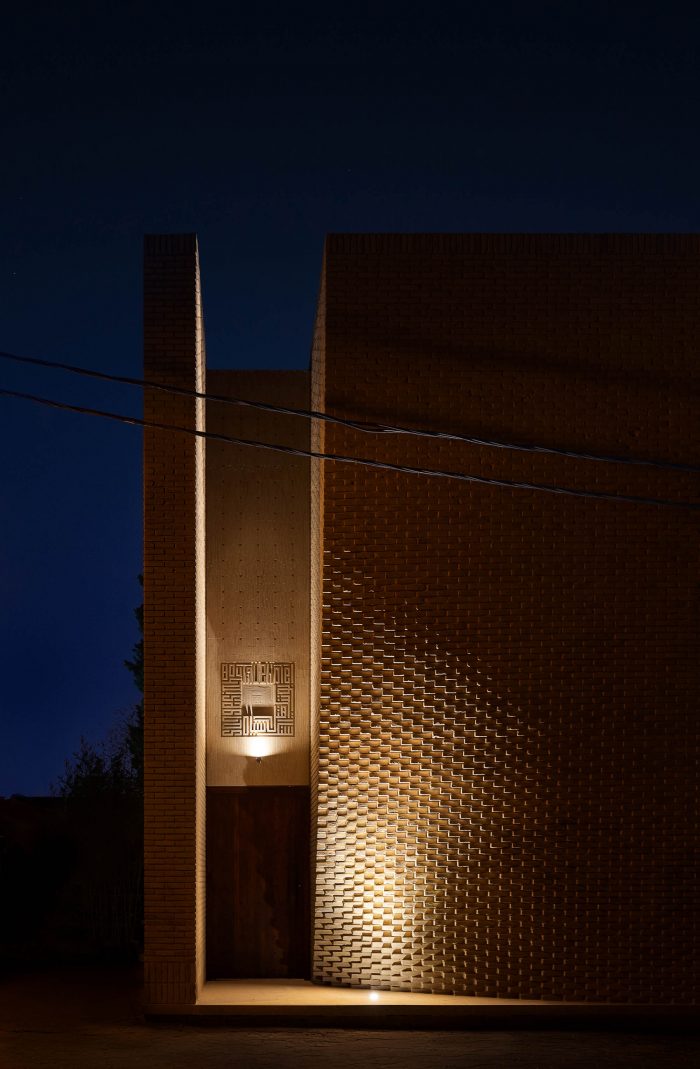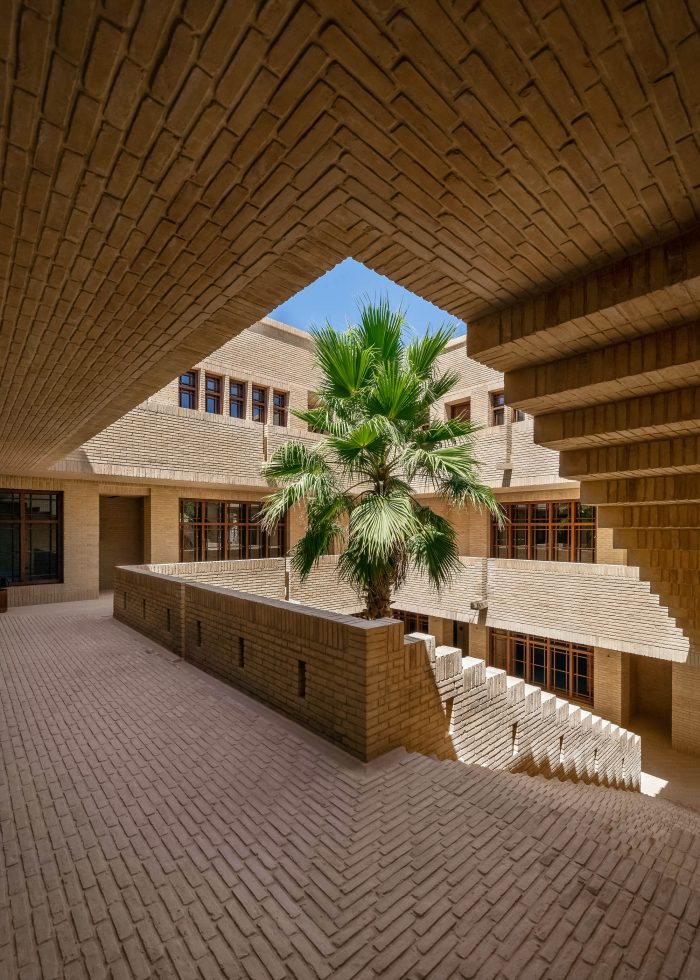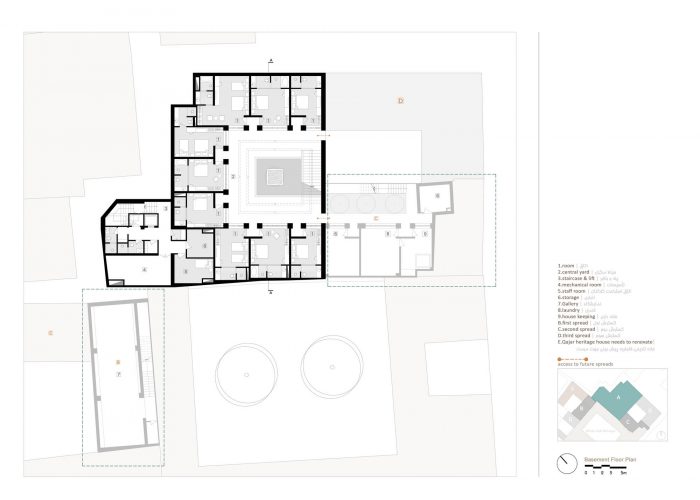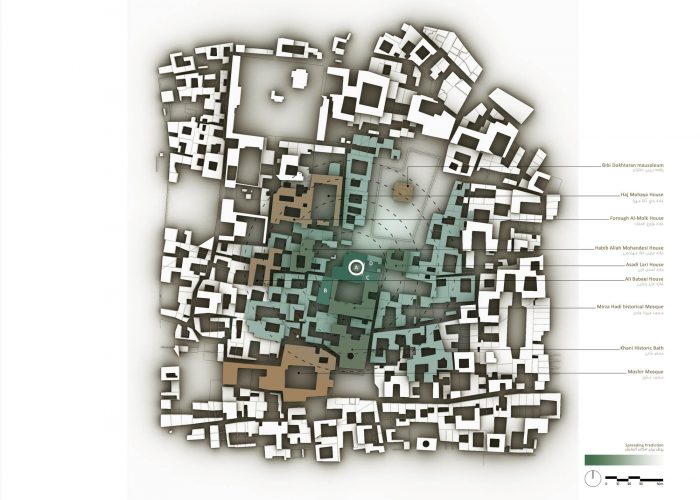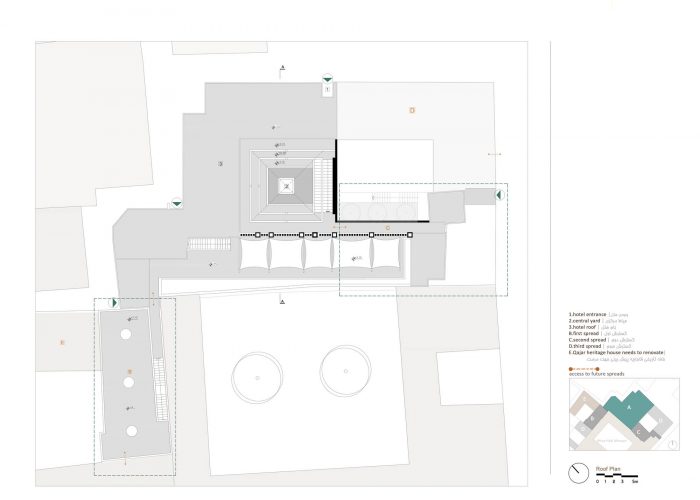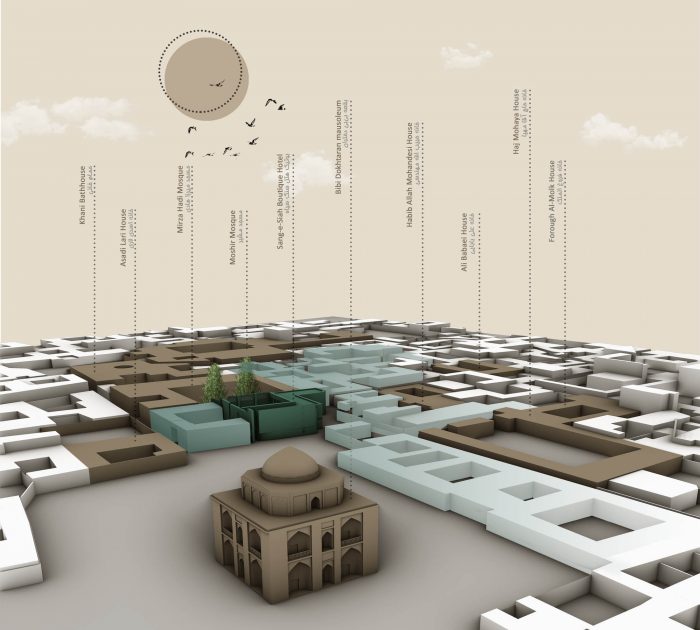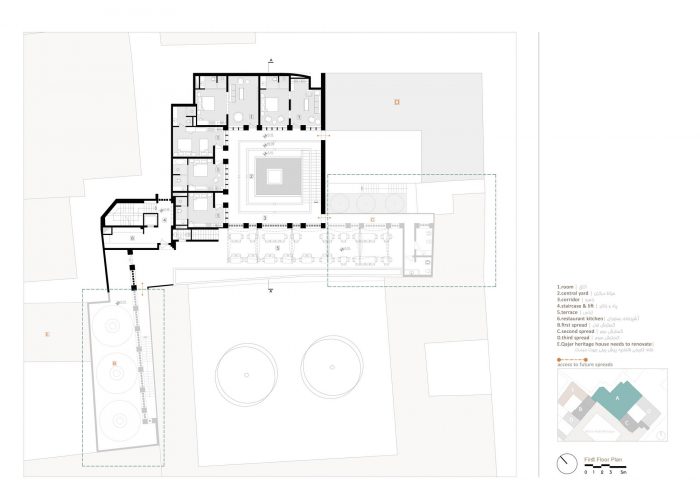该项目确定的主题是在设拉子的历史背景下,在Sang-e-Siah街区,在Ilkhani、Zandeih、Qajar和Pahlavi历史时期的五座国家注册建筑之间,创建一个传统的住宅。近年来,情境修复项目以拆迁和聚集策略为基础,通过消除细部结构和通道、确定大型项目和建设街道,逐步消除空隙和体量的比例、通道的几何和交流系统以及历史情境中重要部分的结构。
This project was defined with the subject of creating a traditional residence in the historical context of Shiraz, Sang-e-Siah neighborhood, between five National Registered Buildings from Ilkhani, Zandeih, Qajar and Pahlavi historical periods. In recent years, context rehabilitation projects have been developed based on the demolition and aggregation strategy, which gradually eliminate the proportions of void and mass, the geometric and communication system of passages and the structure of a significant part of historical context by eliminating fine-grained structures and passages, defining large-scale projects and constructing streets.
本项目是尝试体验修复,并提供一种在历史语境中传播的方式,使其改变社会文化结构,产生新的生命。但历史语境复原的主要问题是如何处理决策组织所希望的伪历史模式,这些组织试图用我们熟悉的代码和装饰物来模仿原作。我们尽量不涉及项目中常见的代码和纹饰,以历史语境的复原为方向,提出一种将块与块之间的生活蔓延到语境中的策略。
This project is an attempt to experience rehabilitation and provide a way to spread it in the historical context so that it changes the social and cultural structure and generates the new life. But the main problem in rehabilitation of historical context is to deal with the pseudo-historical patterns desired by decision-making organization that are trying to make an imitation of the original with codes and ornaments which are familiar to our eyes. We tried not to involve the project in common codes and motifs to propose a strategy for spreading block to block of life into the context in the direction of rehabilitation of historical context.
我们没有将城市地块聚合起来,定义一个大尺度的体量,而是想到了预测建筑的融入,尽管财力有限,也不可能一下子全部拥有,但我们还是从最初的核心开始设计,并预测它向相邻地块的扩展,最终扩散到语境中。在初始核心的建设过程中,根据原始预测获得了两个相邻的城市地块,目前正在建设中,另外几个城市地块也进入了占有阶段。
Instead of aggregating the urban plots and defining a largescale mass, we thought of predicting the incorporation of the building, and despite limited financial resources, and the impossibility of possess all at once, we started the design with an initial core and predicted its expansion to adjacent plots and eventually its spread to the context. During the construction of the initial core, two adjacent urban plots were acquired based on primitive predictions, which are currently under construction, and several other urban plots are in the phase of possession.
决定纳入而不是聚集,可以让项目永葆生命力,细部结构以相同的位置和比例连接到更大的体量上实现不同的功能,不同层次的通道再现了内部的外部沟通网络。从一个块体到另一个块体,延长生命是复兴历史语境的建议,但它永远是未完成的,有着隐秘而持续的扩张欲望。
Deciding incorporation rather than aggregation will allow the project to live forever, the fine-grained structures are connected to larger mass for different functions with the same position and proportions and passages at different levels reproduce the external communication network inside. Extending life from block to block is a suggestion for reviving the historical context, but it will always remain unfinished with a hidden and constant desire to expand.
无论在哪里发现有价值的建筑,都要对其进行修复,无论在哪里发现没有维护价值的建筑或城市地块,都要设计和建造一个与环境互动的建筑,感知比例、几何、空隙和质量,并试图代表它的时代,就像周围的历史遗迹一样,代表当时的技术和需求,与环境相联系。
Wherever it finds a valuable structure, rehabilitates it, and wherever it finds a structure with no maintenance values or an urban land plot, it design and construct a building which is in interact with the context, perception the proportions, geometry and void and mass and tries to represent its era, like the surrounding historical monuments that represented the technology and needs of their time in connection with the context.
建筑师:Stak Office
面积:1280 m²
年份:2020年
照片:Navid Atrvash, Arash Akhtaran, Ali Sodagaran
制造商:AutoDesk, Nobili, Grasshopper, Rhino
建筑师:Ali Sodagaran, Nazanin Kazeroonian, Mohammad Amin Nejabat
设计团队:M.Shahvar、H.Haghtalab、Salman.Shoorangiz、Sh.Nejati、N.Heydarjan、M.Koohpaye、S.Ordoobadi、T.Farahmandfar、S.Soleymani、P.Esmailnejad
客户:Ali Sodagaran, Nazanin Kazeroonian, Mohammad Amin Nejabat
机械:S.Mehdi Alavian
监督:Ebrahim Mozafarian, Salman Rostami, Hasan Zarifkar
图文 : Samaneh Motaghipisheh
城市 : Shiraz
国家:伊朗
Architects: Stak Office
Area: 1280 m²
Year: 2020
Photographs: Navid Atrvash, Arash Akhtaran, Ali Sodagaran
Manufacturers: AutoDesk, Nobili, Grasshopper, Rhino
Architect In Charge:Ali Sodagaran, Nazanin Kazeroonian, Mohammad Amin Nejabat
Design Team:M.Shahvar, H.Haghtalab, Salman.Shoorangiz, Sh.Nejati, N.Heydarjan, M.Koohpaye,S.Ordoobadi, T.Farahmandfar, S.Soleymani, P.Esmailnejad
Clients:Ali Sodagaran, Nazanin Kazeroonian, Mohammad Amin Nejabat
Mechanical:S.Mehdi Alavian
Supervision:Ebrahim Mozafarian, Salman Rostami, Hasan Zarifkar
Graphic:Samaneh Motaghipisheh
City:Shiraz
Country:Iran

